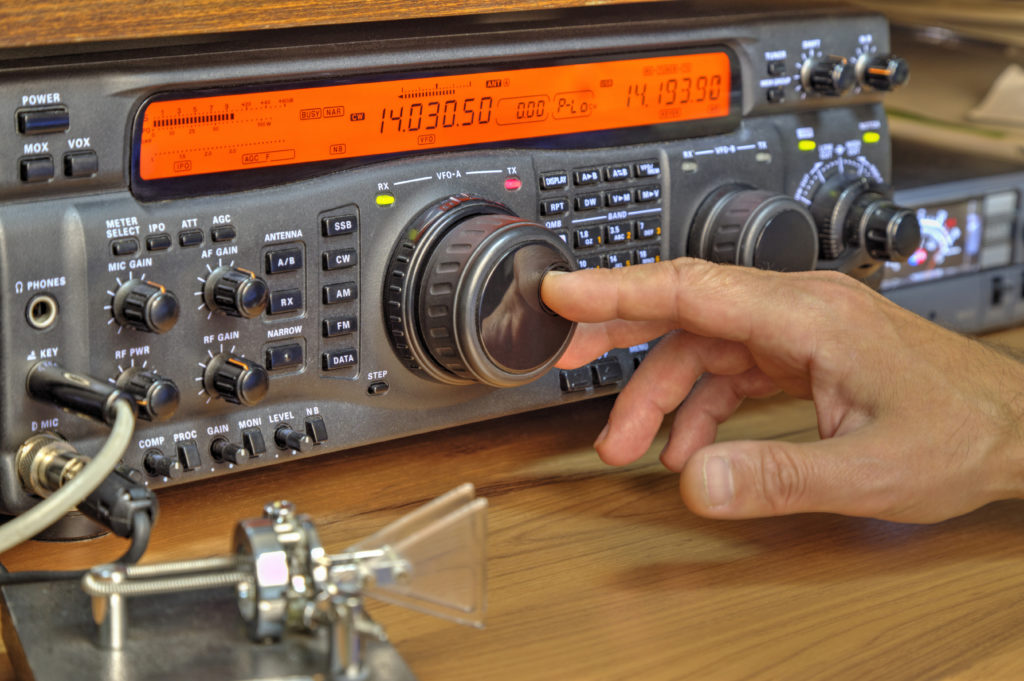Ham radio, also known as amateur radio, has been a popular hobby for decades. It provides a means of communication that is independent of the internet and cellular networks, making it a valuable tool in times of emergency. In this article, we will explore the latest news and developments in the world of ham radio and how it continues to play a crucial role in our increasingly interconnected world.
The Enduring Popularity of Ham Radio
Despite the rise of modern communication technologies, ham radio remains a beloved pastime for millions of enthusiasts worldwide. The allure of ham radio lies in its ability to establish communication over long distances using minimal equipment. It offers a unique sense of adventure and connection with fellow operators, as well as the opportunity to develop technical skills and contribute to public service.
One of the main reasons for the enduring popularity of ham radio is its resilience. Unlike traditional communication methods that rely on centralized infrastructure, ham radio operates on a decentralized network of licensed operators. This independence allows for communication during emergencies when other forms of communication may fail, such as natural disasters or power outages.
Advancements in Ham Radio Technology
Over the years, ham radio technology has evolved to meet the changing needs of operators. Advancements in digital signal processing and software-defined radios have significantly improved the quality and reliability of communication. These technologies enable operators to transmit and receive signals more efficiently, even in challenging conditions.
One notable advancement in ham radio is the introduction of digital modes. These modes allow for the transmission of data, images, and even video over the airwaves. Digital modes such as FT8 and PSK31 have gained popularity among operators as they provide efficient communication with minimal power and bandwidth requirements.
Another significant development in ham radio technology is the integration of GPS. By combining GPS with radio transceivers, operators can determine their precise location and share it with others. This feature is particularly useful in search and rescue operations, where accurate positioning can save lives.
Ham Radio and Emergency Communication
One of the most critical roles of ham radio is its involvement in emergency communication. During natural disasters or other emergencies, traditional communication infrastructure can become overloaded or damaged, making it difficult for people to reach out for help. Ham radio operators, on the other hand, can quickly establish communication networks and relay vital information to emergency responders.
For example, in the aftermath of Hurricane Katrina in 2005, ham radio operators played a crucial role in coordinating rescue efforts and providing essential communication links when traditional means were unavailable. Their ability to operate independently of centralized infrastructure proved invaluable, saving lives and aiding in the recovery process.
Furthermore, ham radio operators often participate in drills and exercises to test their emergency communication capabilities. These events simulate real-life scenarios and allow operators to hone their skills and identify areas for improvement. By actively engaging in emergency preparedness, ham radio operators contribute to the overall resilience of their communities.
Ham Radio Clubs and Communities
Ham radio is not just an individual hobby; it is also a vibrant community of enthusiasts who share a passion for communication and technology. Ham radio clubs and organizations provide a platform for operators to connect, exchange knowledge, and participate in various activities.
These clubs often organize field days, where operators set up temporary stations in remote locations and engage in on-air activities. Field days offer an opportunity for operators to test their equipment, practice emergency communication procedures, and socialize with fellow enthusiasts.
Furthermore, ham radio communities foster a culture of mentorship and lifelong learning. Experienced operators often mentor newcomers, guiding them through the licensing process and helping them develop their skills. This collaborative environment ensures the continuity of the hobby and encourages the next generation of operators to get involved.
International Ham Radio Competitions
Ham radio competitions are another exciting aspect of the hobby. These contests challenge operators to make as many contacts as possible within a specified time frame and under specific conditions. Competitions can vary in scale, from local events organized by clubs to international contests that attract participants from around the world.
Contests not only provide a thrilling experience for operators but also contribute to the advancement of ham radio technology. The intense competition drives operators to push the boundaries of their equipment and techniques, leading to innovations that benefit the entire community.
The Role of Ham Radio in Public Service
Ham radio operators are often involved in public service activities, providing communication support for community events, public gatherings, and disaster response efforts. Their expertise in establishing communication networks quickly and efficiently makes them valuable assets during such events.
For instance, during large-scale public gatherings like marathons or parades, ham radio operators help coordinate logistics and ensure the safety of participants and spectators. Their ability to communicate in real-time enables event organizers to respond promptly to any emergencies or unexpected situations that may arise.
In addition, ham radio operators also contribute to public service through activities such as skywarn, where they provide weather observations to national meteorological agencies. These observations help meteorologists track severe weather conditions and issue timely warnings to the public, potentially saving lives.
Ham Radio Licensing and Regulations
In most countries, operating a ham radio requires a license issued by the regulatory authority responsible for telecommunications. The licensing process typically involves passing an examination that tests the operator’s knowledge of radio theory, operating procedures, and regulations.
Regulations vary from country to country, but they generally aim to ensure responsible and efficient use of the radio spectrum. Licensed operators are required to adhere to frequency allocations, power limits, and other guidelines specified by their regulatory authority.
Amateur radio licenses are available in different classes, with each class granting specific privileges and operating frequencies. Novice operators start with a basic license and can progress to higher classes by passing additional examinations. This tiered licensing system encourages operators to continuously learn and upgrade their skills.
The Future of Ham Radio
As technology continues to advance, ham radio is poised to embrace new opportunities and challenges. The integration of digital modes, GPS, and other technologies has already transformed the hobby, enabling operators to communicate more efficiently and diversifying the ways they can engage with the radio spectrum.
In the future, we can expect further advancements in software-defined radios, data transmission protocols, and networking capabilities. These advancements will enhance the versatility of ham radio and open up new possibilities for communication, experimentation, and public service.
Conclusion
Ham radio remains a vibrant and essential part of our communication landscape. Its ability to provide independent and reliable communication makes it invaluable during emergencies and public service activities. The passion and dedication of ham radio operators, coupled with advancements in technology, ensure that this timeless hobby will continue to thrive in our digital world.
Frequently Asked Questions (FAQs)
1. How do I get started with ham radio?
Getting started with ham radio is relatively easy. The first step is to obtain a license by passing an examination administered by your country’s regulatory authority. There are numerous resources available online and in books to help you prepare for the exam. Once licensed, you can purchase a radio and start exploring the world of ham radio.
2. Can I use ham radio during a power outage?
Yes, ham radio can be used during a power outage as it operates independently of the electrical grid. Ham radio operators often have backup power sources such as batteries or generators to ensure uninterrupted communication during emergencies.
3. How far can ham radio signals reach?
The range of ham radio signals depends on various factors, including the power output of the transmitter, the frequency used, and the antenna setup. With the right equipment and operating conditions, it is possible to communicate over hundreds or even thousands of miles using ham radio.
4. Are there any age restrictions for obtaining a ham radio license?
No, there are no age restrictions for obtaining a ham radio license. People of all ages can enjoy and participate in the hobby. In fact, many young operators are actively involved in ham radio through school clubs and mentorship programs.
5. Can I communicate with astronauts on the International Space Station using ham radio?
Yes, it is possible to communicate with astronauts on the International Space Station using ham radio. The astronauts often participate in scheduled contacts with schools and amateur radio clubs around the world, providing a unique opportunity for operators to engage in direct communication with space.
Summary
Ham radio, also known as amateur radio, continues to be a popular hobby and a vital communication tool in our increasingly interconnected world. Its resilience, independence from centralized infrastructure, and ability to provide reliable communication during emergencies make it invaluable. Advancements in technology have enhanced the capabilities of ham radio, introducing digital modes and integrating GPS for accurate positioning. Ham radio operators play a crucial role in emergency communication and public service activities, offering their expertise and support. The ham radio community is a vibrant one, with clubs and organizations fostering collaboration, mentorship, and lifelong learning. Ham radio competitions drive innovation and push the boundaries of technology. Licensing and regulations ensure responsible and efficient use of the radio spectrum. As technology continues to advance, ham radio is poised to embrace new opportunities and challenges, ensuring its relevance in the future. Ham radio remains a timeless hobby, connecting people and contributing to the overall resilience of communities.



